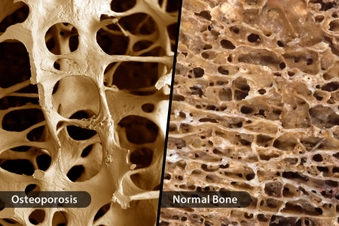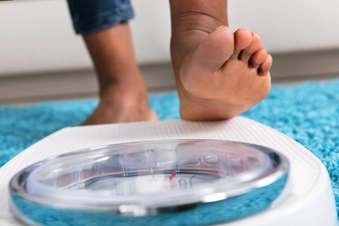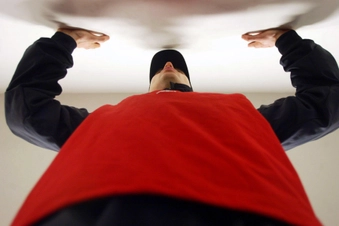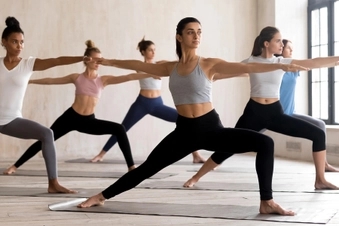Benefits of Strength Training

Strength Training vs. Aerobic Exercise
The biggest difference between these types of workouts is how they affect your body. Strength training, like lifting weights or using resistance bands, builds your muscles and helps them work the way they should. Aerobic exercise, like running or swimming, is designed to make your heart stronger and help your body use oxygen better. Both are good for your overall health, just in different ways.

Your Bones Get Stronger
Osteoporosis is when your bones get weaker as you get older. Strength training can help prevent it or keep it from getting worse. Exercise triggers the cells that form bone into action. Your hips, spine, and wrists can get the biggest benefit from strength training. They’re also the places most likely to be affected by osteoporosis.

You Shed Pounds
Lifting weight can help you carry less weight. Strength training can get rid of body fat and help you burn more calories. Keeping your muscles healthy also can help prevent injuries that can happen while you’re doing aerobic exercise like walking or running.

You Keep Your Balance
As you get older, you lose strength in your legs. That can lead to falls and fractures. Exercises like leg extensions, leg curls, leg presses, and walking can make your lower half stronger. That improves your balance.

Muscles Get Healthier
Strength training puts your muscles to work. If you have back pain, it can build up core areas like your lower back and abdominals to make you feel better. It also can keep your muscles in good shape as you age. That’s important -- even for basic activities like walking and lifting.

You Get More Flexible
Strength or resistance training can keep your joints moving the way they should. Building up the muscles around your bones lubricates your joints, eases swelling, and helps slow bone loss. This is especially helpful if you have stiffness from a condition like arthritis.

Your Chances of a Heart Attack Go Down
Lifting weight can mean less heavy lifting for your heart. One study says weight training for an hour a week can cut your chances of having a heart attack or stroke by up to 70%. And you don’t have to do it all at once. Three 20-minute sessions each week will work.

You Cut Your Odds of Type 2 Diabetes
Strength training used to take a back seat to aerobic exercise when it came to fending off type 2 diabetes. But studies have shown that it can help with many things related to the condition, like helping your body process glucose, boosting your metabolism, and losing weight.

No Gym? No Problem.
Strength workouts don’t have to be expensive or time-consuming. You can do them at home. For example, use two 16-ounce cans of soup to strengthen your arms. Just bend your elbows and bring the cans up to your shoulders and back down 10 to 15 times. Or face a wall and stand 2 feet away. Put your hands on the wall even with your chest, and lean your body in and then back, like a pushup. Keeping your legs straight, do this 10 to 15 times.

Don’t Like Weights? Try Yoga.
You don’t have to work as hard with this type of exercise, and it doesn’t use weights. But it is a good way to build strength. Doing yoga for 90 minutes, twice a week for 8 weeks, can boost muscle strength and make you more flexible.

Get Some Aerobic Work in, Too
Combining strength training and aerobic exercise can have definite benefits, like helping you get good sleep. The two together can also boost your mental health by making you feel better about yourself. Aerobic exercises like riding a stationary bike, rowing, or hitting the treadmill are good warmups before your strength training routine.
Show Sources
IMAGES PROVIDED BY:
1) (Left to right) Bojan89 / Getty Images, FlairImages / Getty Images
2) (Left to right) Alan Boyde / Getty Images, Alan Boyde / Getty Images
3) AndreyPopov / Getty Images
4) Wavebreakmedia / Getty Images
5) endopack / Getty Images
6) monkeybusinessimages / Getty Images
7) (Left to right) sankalpmaya / Getty Images, Thinkstock / Getty Images
8) AndreyPopov / Getty Images
9) Gary Friedman / Getty Images
10) fizkes / Getty Images
11) djiledesign / Getty Images
SOURCES:
Penn State Extension: “Strength Training vs. Aerobic Training: Which Is Better for My Health?”
CDC.gov: “Growing Stronger: Strength Training For Older Adults.”
American Cancer Society: “5 Benefits of Strength Training.”
Harvard Health Publishing: “Strength Training Builds More Muscles,” “Give Your Heart Health A Lift,” “Yoga -- Benefits Beyond The Mat.”
Mayo Clinic: “Strength Training: Get Stronger, Leaner, Healthier.”
Med.upenn.edu: “Home Strength Training Program.”
Journal of Physical Therapy Science: “Balance Improvement By Strength Training For The Elderly.”
Arthritis Foundation: “3 Simple Weightlifting Moves.”
American Diabetes Association: “Strength Training In Diabetes Management.”
Yoga Alliance: “Benefits of Yoga.”